Sutton and Boveri: outline the roles of Sutton and Boveri in identifying the importance of chromosomes

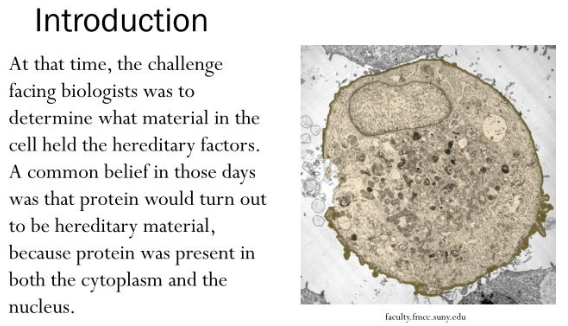
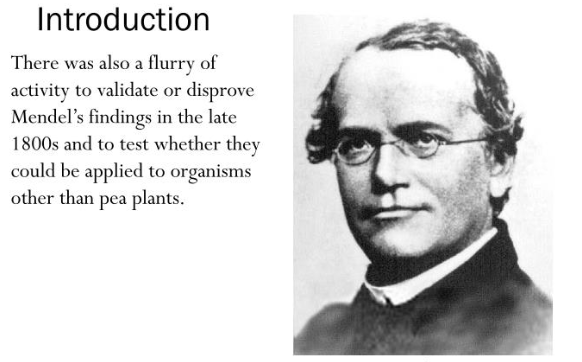


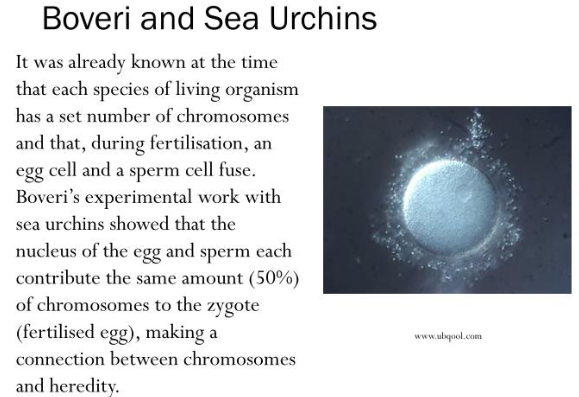
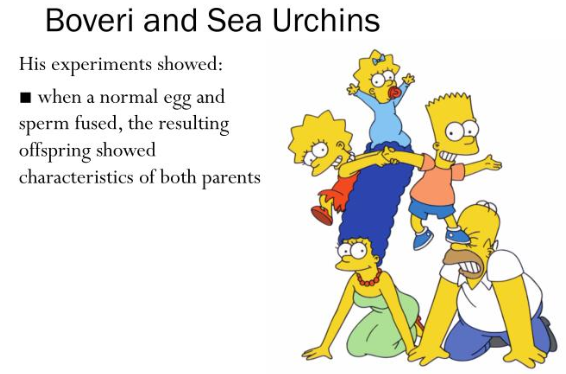
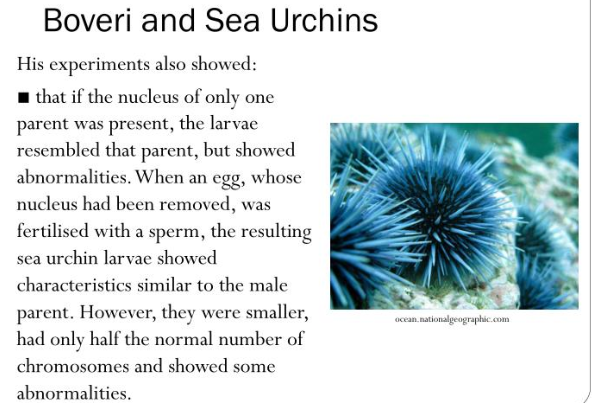
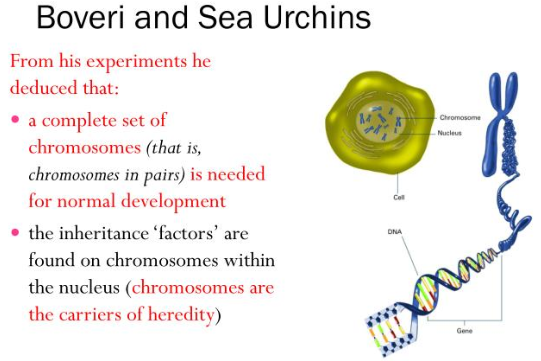
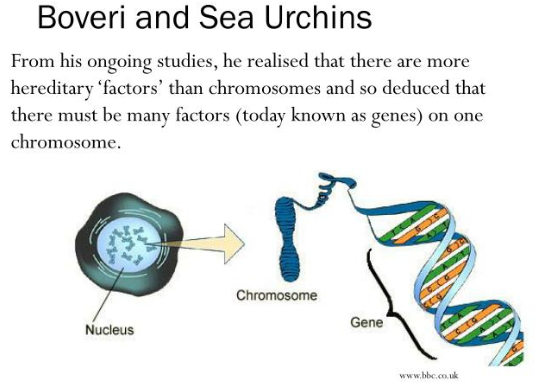
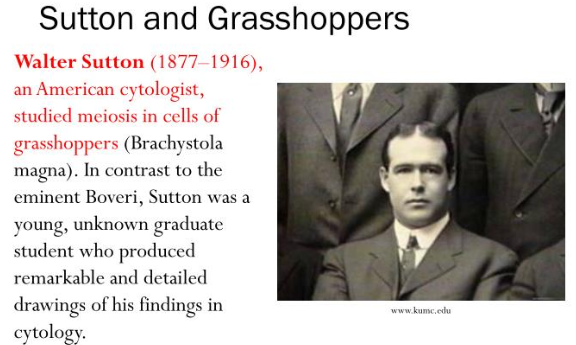
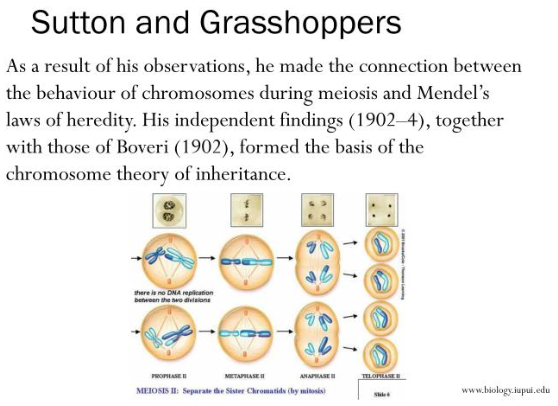
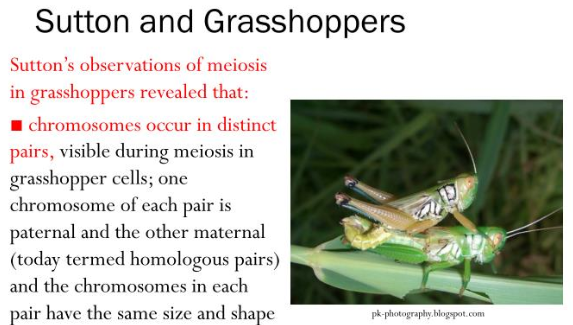




Introduction Towards the end of the 19th century, cytology (the study of cells) was the scientific area of research that was in vogue, with many important discoveries being made at around the turn of the century. This is not surprising, since compound light microscopes had advanced to a point where they no longer produced distorted images, becoming the ‘new technology’ used to reveal the wonders of what lies within ells and to validate evidence for new theories. parkerlab.bio.uci.edu
Introduction At that time, the challenge facing biologists was to determine what material in the cell held the hereditary factors. A common belief in those days was that protein would turn out to be hereditary material, because protein was present in both the cytoplasm and the nucleus. faculty.fmcc.suny.edu
Introduction There was also a flurry of activity to validate or disprove Mendel’s findings in the late 1800s and to test whether they could be applied to organisms other than pea plants. creationrevolution.com
Boveri and Sea Urchins Theodor Boveri, a German biologist, was one of the leading cytologists at the turn of the century. Between 1896 and 1904, he carried out experiments on sea urchin eggs, studying the behaviour of the cell nucleus and chromosomes during meiosis and after fertilisation. idw-online.de
Boveri and Sea Urchins Sea urchin eggs were ideally suited for study because they could be easily fertilised in a laboratory and have a quick (48 hour) time frame for larval development. Boveri’sstudies were advanced for his time, as he did not simply rely on observations made with a microscope, but also solved problems by experimenting with the larvae of sea urchins. www.thorntonsrestaurant.com
Boveri and Sea Urchins It was already known at the time that each species of living organism has a set number of chromosomes and that, during fertilisation, an egg cell and a sperm cell fuse. Boveri’sexperimental work with sea urchins showed that the nucleus of the egg and sperm each contribute the same amount (50%) of chromosomes to the zygote (fertilised egg), making a connection between chromosomes and heredity. www.ubqool.com
Boveri and Sea Urchins His experiments showed: ■ when a normal egg and sperm fused, the resulting offspring showed characteristics of both parents counsellorsofwisdom.com
Boveri and Sea Urchins His experiments also showed: ■ that if the nucleus of only one parent was present, the larvae resembled that parent, but showed abnormalities. When an egg, whose nucleus had been removed, was fertilised with a sperm, the resulting sea urchin larvae showed characteristics similar to the male parent. However, they were smaller, had only half the normal number of chromosomes and showed some abnormalities. ocean.nationalgeographic.com
Boveri and Sea Urchins From his experiments he deduced that: • a complete set of chromosomes (that is, chromosomes in pairs)is needed for normal development • the inheritance ‘factors’ are found on chromosomes within the nucleus (chromosomes are the carriers of heredity) web1.beverlyhg-h.schools.nsw.edu.au
Boveri and Sea Urchins From his ongoing studies, he realised that there are more hereditary ‘factors’ than chromosomes and so deduced that there must be many factors (today known as genes) on one chromosome. www.bbc.co.uk
Sutton and Grasshoppers Walter Sutton (1877–1916), an American cytologist, studied meiosis in cells of grasshoppers (Brachystola magna). In contrast to the eminent Boveri, Sutton was a young, unknown graduate student who produced remarkable and detailed drawings of his findings in cytology. www.kumc.edu
Sutton and Grasshoppers As a result of his observations, he made the connection between the behaviour of chromosomes during meiosis and Mendel’s laws of heredity. His independent findings (1902–4), together with those of Boveri (1902), formed the basis of the chromosome theory of inheritance. www.biology.iupui.edu
Sutton and Grasshoppers Sutton’s observations of meiosis in grasshoppers revealed that: ■ chromosomes occur in distinct pairs, visible during meiosis in grasshopper cells; one chromosome of each pair is paternal and the other maternal (today termed homologous pairs) and the chromosomes in each pair have the same size and shape pk-photography.blogspot.com
Sutton and Grasshoppers Sutton’s observations of meiosis in grasshoppers revealed that: ■ during meiosis (reduction division), the chromosome number of a cell is halved: the chromosomes in each pair of chromosomes separate (just like Mendel’s factors segregate—his law of dominance and segregation) and each gamete receives one chromosome from each pair ■ fertilisation restores the full number of chromosomes in the zygote. www.tutorvista.com
Sutton and Grasshoppers He concluded that chromosomes were the carriers of heredity units and behaved in the same manner as Mendel’s ‘factors of inheritance’ (genes). www.beltina.org
Sutton and Grasshoppers In addition, Sutton stated that: ■ Chromosomes arrange themselves independently along the middle of the cell just before it divides—that is, they assort independently of each other during segregation, like Mendel’s factors (evidence for Mendel’s law of independent assortment) www.downsyndrome.org.za
Sutton and Grasshoppers In addition, Sutton stated that: ■ Chromosomes are units involved in inheritance. Sutton, like Boveri, also believed that several Mendelian‘factors’ must be present in one chromosome and could therefore be inherited as a unit. (This is what we term ‘linkage’ today. It will be dealt with in more detail later). www.scienceclarified.com
Response of the scientificcommunity at the time Boveri and Sutton’s chromosome theory linking chromosomes and heredity was regarded with scepticism by many, but accepted by others, causing much discussion and debate in the early part of the 20th century. As is common in science, Sutton and Boveri’sdeductions became hypotheses for testing in future experiments— scientists set about trying to validate or disprove these findings. a
Response of the scientificcommunity at the time With advances in scientific understanding and improved technology, their cytological interpretation of Mendelian inheritance was convincingly confirmed in 1915 and still holds today. www.transtutors.com
Sutton—Boveri假说
(1)体细胞中有两组相同的染色体,一组来源于父方,一组来源于母方。染色体的成对存在和基因的成对存在是平行的。
(2)染色体在细胞分裂的每个时期,保持其形态特点。基因也显示同样的连续性。
(3)减数分裂时,同源染色体配对,然后每对的两个成员分离,进入不同的生殖细胞,每对的分离和其他各对的分离是独立的。配子形成前的某个时期,基因也独立地分离。
(4)每个或每对染色体在生活和发育中都有一定的作用。基因也是这样。
Sutton和Boveri的研究促进了细胞遗传学的发展。Sutton还提出,如果有一些基因在同一染色体上,必然会是非独立分配的,否则,“各种性状的数目,……就不能超过染色体的数目”。Sutton和Boveri是实验观察推论的杰出科学家,今天读他们的论文仍然很有收益!
转载本文请联系原作者获取授权,同时请注明本文来自王庆浩科学网博客。
链接地址:https://wap.sciencenet.cn/blog-1184431-1262147.html?mobile=1
收藏


